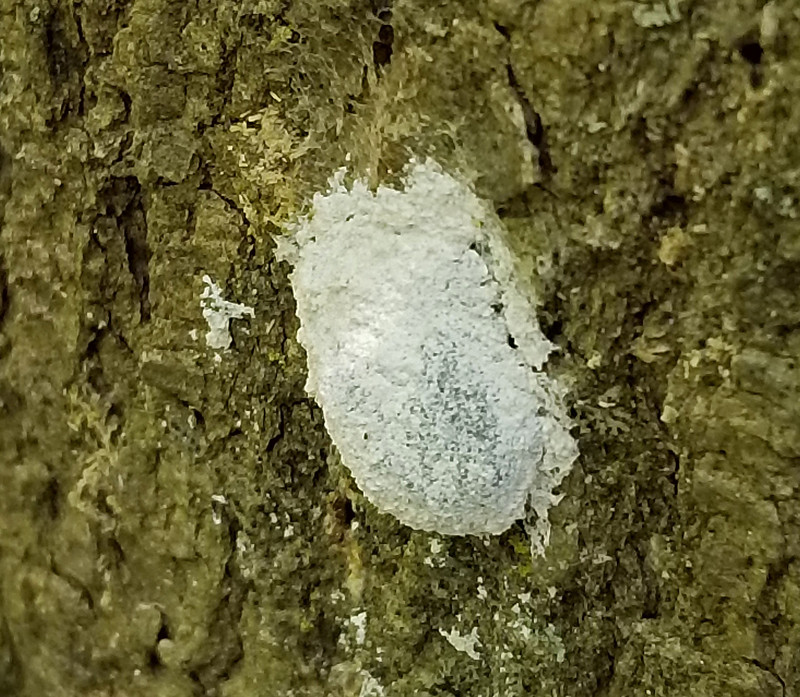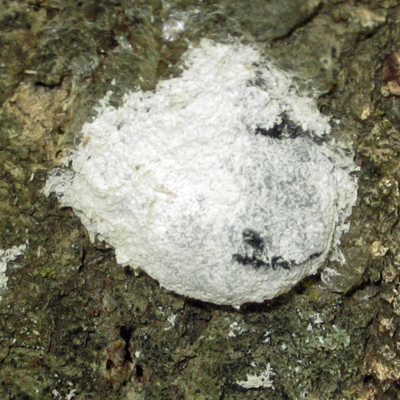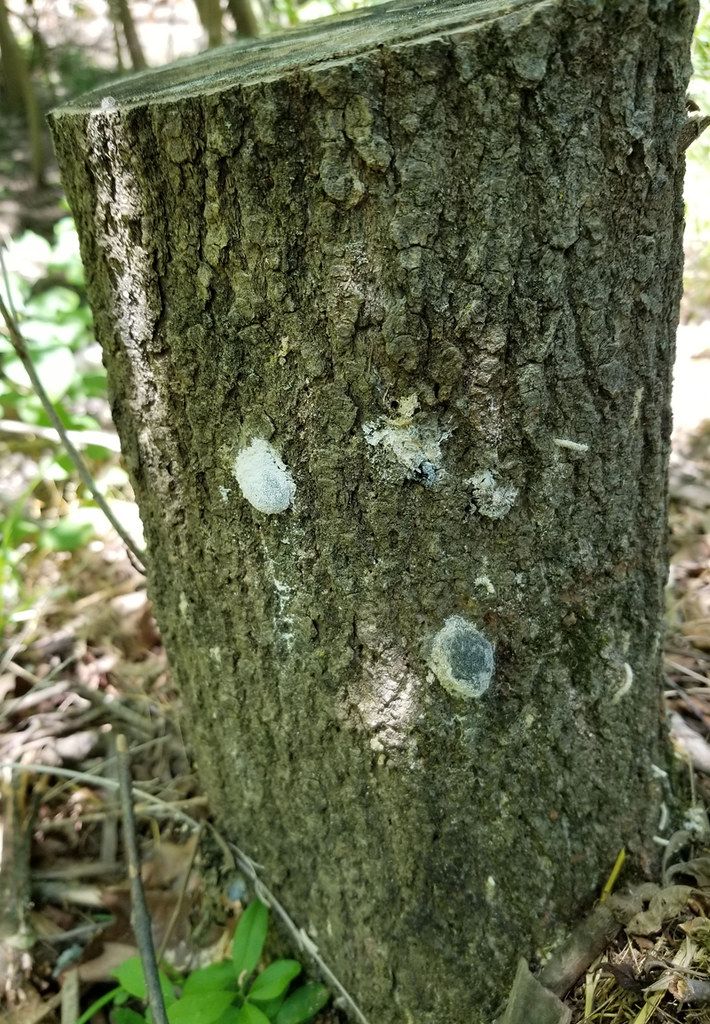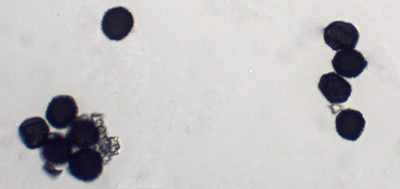Map Snapshot


4 Records
Status
Scattered, may form clusters. On rotting wood, dead leaves, plant debris.
Description
Lump with white chalky outer layer of crystals covering black spore mass. Up to 2.8” (7 cm) long by as much as 2” (5 cm) wide. May be up to 0.8” (2 cm) thick. (J. Solem, pers. comm.)
Seasonality Snapshot
Source: Wikipedia
| Mucilago | |
|---|---|

| |
| Scientific classification | |
| Domain: | Eukaryota |
| Phylum: | Amoebozoa |
| Class: | Myxogastria |
| Order: | Physarales |
| Family: | Didymiaceae |
| Genus: | Mucilago P. Micheli ex Adans. |
| Species: | M. crustacea
|
| Binomial name | |
| Mucilago crustacea P. Micheli ex F.H. Wigg
| |
Mucilago crustacea is a species of slime mould, in the monotypic genus Mucilago, in the family Didymiaceae.[1] Due to its visual resemblance to canine vomit,[2] it is known colloquially as the "dog sick slime mould"[3] or "dog sick fungus",[4] albeit that slime moulds are not true fungi.[4]
The fruiting body is yellow to white, becoming paler with time, and then blackening.[3]
It usually occurs on damp grass.[2] The species was described by P. Micheli ex F.H. Wigg.[2][5]
References
[edit]![]() Media related to Mucilago crustacea at Wikimedia Commons
Media related to Mucilago crustacea at Wikimedia Commons
- ^ Ing, B. (1999). The myxomycetes of Britain and Ireland. An identification handbook. Slough: Richmond Publishing Co.
- ^ a b c Silverside, Alan J. "Mucilago crustacea". Images of British biodiversity. Retrieved 1 September 2018.
- ^ a b "Dog Sick Slime Mould". NatureSpot. Retrieved 1 September 2018.
- ^ a b O'Riordan, Elaine (August 2017). "Mucilago crustacea". People and Nature - The Galway County Biodiversity Project. Retrieved 1 September 2018.
- ^ Prim. fl. holsat. (Kiliae): 112 (1780)






